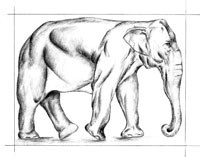How is the map of scientific activity evolving? How can various sites reach equilibrium? And what tensions are at play in this equilibrium?
This site presents the findings of research projects conducted as part of the GéoScience programme supported by the Agence Nationale de la Recherche (ANR), investigating the global geography of scientific activity. It also features work from the NetScience project, delivered since 2013 as part of the “Mondes Scientifiques”programme led by LabEx “Structuration des Mondes Sociaux” ( Excellence Lab, Organizing Social Worlds).
After Crawford, Shinn and Sörlin (1993), Grossetti and Losego (2003) or Milard and Grossetti (2006), we focus on the tension between on the one hand a process of differentiation and hierarchisation between sites of scientific production (reinforcement of long-established or larger sites on a national scale, and of “dominant” countries on a global scale), and on the other hand a process of redistribution (increased number of significant sites, emergence of new “scientific powers” on the global stage). This work sets the foundations for a socio-geography of scientific activity, building on findings from the history of scientific institutions, scientometrics, the sociological analysis of scientific collaboration as well as regional and urban geography.
Since 2013, the NetScience project has given us the opportunity to consolidate our method for the geographic processing of bibliographic data. This enabled us to analyse the global spatial distribution of scientific publications and collaborations, working on a finer scale than ever before: the scale of urban conurbations.
This methodology enables us to study the distribution of the volume of scientific production on a site-by-site basis, as well as the volume of scientific exchange between sites. We can then create maps of scientific production and representations of scientific collaboration networks between the world’s cities.
